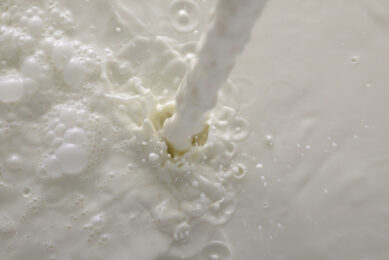Cautious Chinese buying in the months ahead

China’s economy seems to be strengthening but the global dairy import giant’s appetite for trade may not be so robust, says Rabobank Shanghai-based senior dairy analyst Sandy Chen.
“Chinese milk production has remained firm and food service consumption soft. Chinese stocks are mounting and the lower import demand will be a key factor for Australian exporters,” he said.
Speaking on a recent Rabobank podcast, senior analyst Chen said that basic dairy market fundamentals in China would maintain some weakness in the Oceania dairy commodity prices during the coming months. “The next six Global Dairy Trade events will be critical in setting the commodity and farmgate prices for this region,” he emphasised.
The analyst pointed out that China is ahead of the curve in its economic recovery. However, consumer demand remains slow, with retail and food service sales still lower year-on-year. This suggests that the industrial sector and investments rather than consumer spending is driving China’s headline GDP growth.
 Market prices
Market prices
See Dairy Global’s new market prices tool.
After decreasing during quarter one, Chinese dairy processing volumes have gradually returned to positive growth since quarter 2. But they remained slightly depressed, down around 2.5% year-on-year.
With the exception of whey, which remained strong, imports of liquid milk equivalent into China year-on-year were relatively flat – down slightly at 2 to 3% year-on-year during the first half of 2020 . This is surprisingly positive given the market circumstances, according to analyst Chen.
 Market prices
Market prices
World prices dairy products.
Chinese milk powder imports were also down, with the incoming June total for skim milk powder and whole milk powder declining 7%, year-on-year. Rabobank remains cautious around the outlook for trade into China during the months ahead, and forecasts a drop in import volumes for liquid milk equivalent on an annualised basis.
Rabobank expects a 4 to 4.5% year-on-year growth in Chinese milk production volume for the first half of 2020. A buoyant Chinese milk production outlook would continue to accelerate, senior analyst Chen said. “Thanks to renewed investment sentiment for new farms in China, with significant expansion underway.”
 Market prices
Market prices
Raw milk.
There are currently many projects planned and constructed, resulting in an additional 700,000 head of dairy cows. This will increase China’s national dairy herd by 8% over the coming years. “But these developments will not significantly impact the flow of milk onto the Chinese market in the near-term, with many still in the planning stages,” the analyst said.
Analyst Chen said dairy stocks in China have grown significantly. “Retail disruption in the first quarter also forced processing companies to dry a fair amount of locally-sourced milk into whole milk powder, which is still being destocked at the moment,” he said. “Overall, we do see a fair amount of ingredients sitting in inventory in China. Not as bad as what we saw in 2014 and 2015 but still relatively high compared to recent years.”
The prices at the Global Dairy Trade (GDT) auction on 18 August fell 1.7%. The market average dropped to US $3004 per metric tonne, down from US $3045 per metric tonne earlier in the month.
 Market prices
Market prices
Global Dairy Trade.
According to Westpac senior agri economist Nathan Penny in New Zealand the steep price fall over August comes as several countries battle renewed outbreaks of Covid and as total global case numbers continue to increase rapidly.
Penny expects that as countries get on top of the virus flare-ups, some of the August price falls may prove temporary. “On the flipside, if the virus continues to surge in key markets, then prices are likely to fall further,” he says.
According to dairy analysts oversupply in the United States will also have an impact on international pricing. Dairy production in the US has increased but the demand for dairy in the US has dropped. Government purchases in the US will eventually be limited.
Join 13,000+ subscribers
Subscribe to our newsletter to stay updated about all the need-to-know content in the dairy sector, two times a week.










